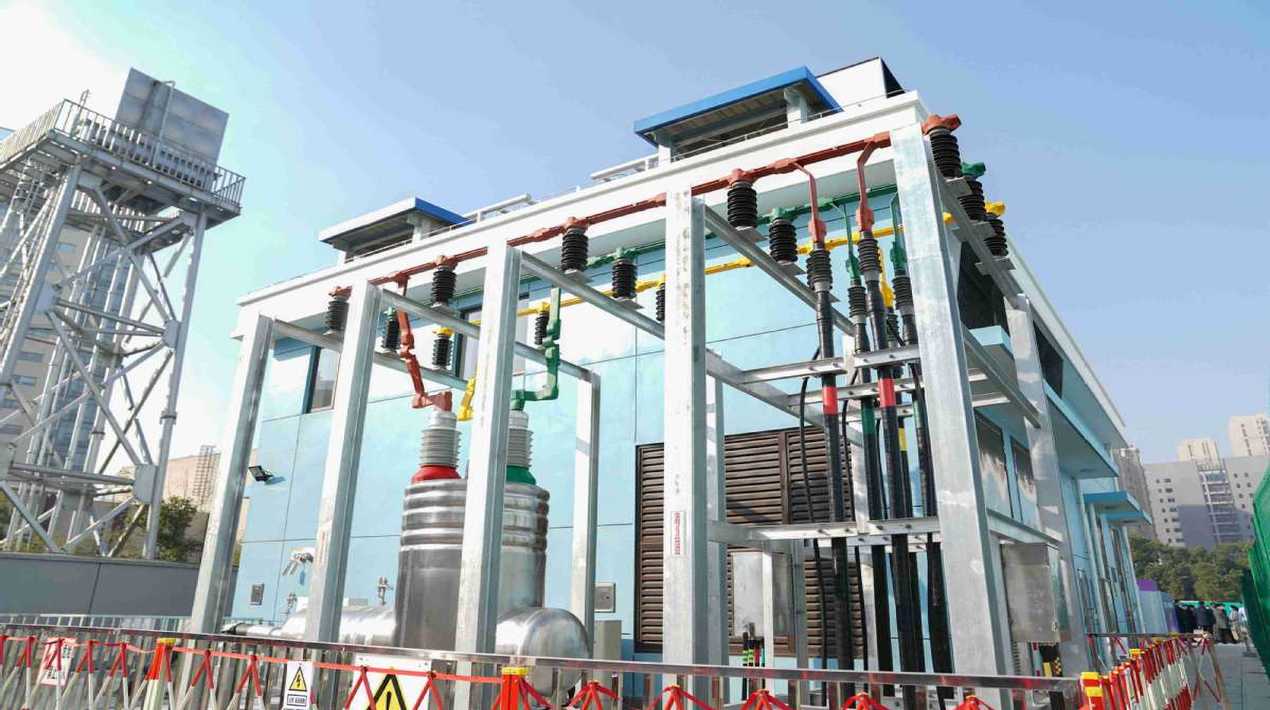
The world’s first 35-kilovolt superconducting power cable was put into operation in Shanghai, making China among the global leaders in superconducting transmission applications. The high-capacity superconducting power line, which is so far the world’s longest superconducting cable transmission project with the largest transmission capacity, marks a major breakthrough in core technologies of China’s construction of a new power system.
Installed in the commercial area of Xuhui district, the 1.2-kilometre cable connects two 220 kV substations with a designed current capacity of 2,200 amps. This is also the first superconducting transmission project built by the centrally administered State Grid in the country.
The nation’s largest power provider by generating capacity, the superconducting cables-one of the most revolutionary cutting-edge technologies in the power sector-represent an innovative power transfer technology that has the potential to offer numerous benefits.
The transmission capacity of superconducting cables is much greater than that for conventional cables, but with much less transmission loss. It is also very suitable for power supply in high-load density areas, providing a new solution to the problem of power supply in high-load-density areas of megacities.
– Xie Wei, Chief Engineer, State Grid Shanghai Municipal Electrical Power Co.
One 35 kV superconducting cable transmission line can transmit the same amount of power as a traditional 220 kV power line and saves 70% of underground pipe gallery space. The transmission efficiency of the high-capacity superconducting power lines can provide reliable and stable power to megacity urban centres, he added.
Gan Zizhao, an academician from the Chinese Academy of Engineering, said superconducting cables have always been an important way to solve issues of power supply to superlarge cities amid efforts to push forward power upgrade and transformation in the country.
With a temperature of -196 C, which is the temperature range required for liquid nitrogen liquefaction, the technology can greatly improve losses in power transmission due to a resistance of zero, said the company. The low-temperature superconducting cable project is one of the results of the strategic cooperation between State Grid and the Shanghai Municipal Government in the fields of science and technology.
Previously, Chinese scientists have developed the world’s first prototype of a superconducting hybrid power line, paving the way for the construction of a 2,000km (1,243-mile) line from energy-rich Xinjiang in the country’s far west to its eastern provinces.
The 10-metre, proof-of-concept wire and liquid natural gas hybrid transmission line was up and running at the Chinese Academy of Sciences’ Institute of Electrical Engineering in Beijing last month to show the feasibility of the technology. The line contains a superconducting wire which can transmit nearly 1,000 amps of electric current at more than 18,000 volts with zero resistance.
In a further difference from a traditional power line, the gap between the superconducting wire and the power line’s outer shell is filled by a flow of slowly moving natural gas liquefied at low temperatures – between minus 183 and minus 173 degrees Celsius (minus 279 to minus 297 Fahrenheit). This allows the line to transfer electricity and fossil fuel at the same time.
The superconductor and natural gas hybrid line offered a possible solution, Zhang said. The loss of electricity over the superconducting wire would be almost zero because of the elimination of resistance to the movement of electrons.
The transport of liquefied natural gas would also be efficient because one cubic metre (1,000 litres) of it would be equivalent to 600 cubic metres of the same fuel in gas form. The temperature needed for liquefaction of natural gas is almost identical to that required for the occurrence of superconductivity, at about minus 163 degrees.
Wang Gengchao, professor of physics at East China University of Science and Technology in Shanghai, said the combination was a smart idea. Superconducting materials are not new but their applications have been limited by the difficulty and cost of creating and maintaining a low-temperature environment.
















